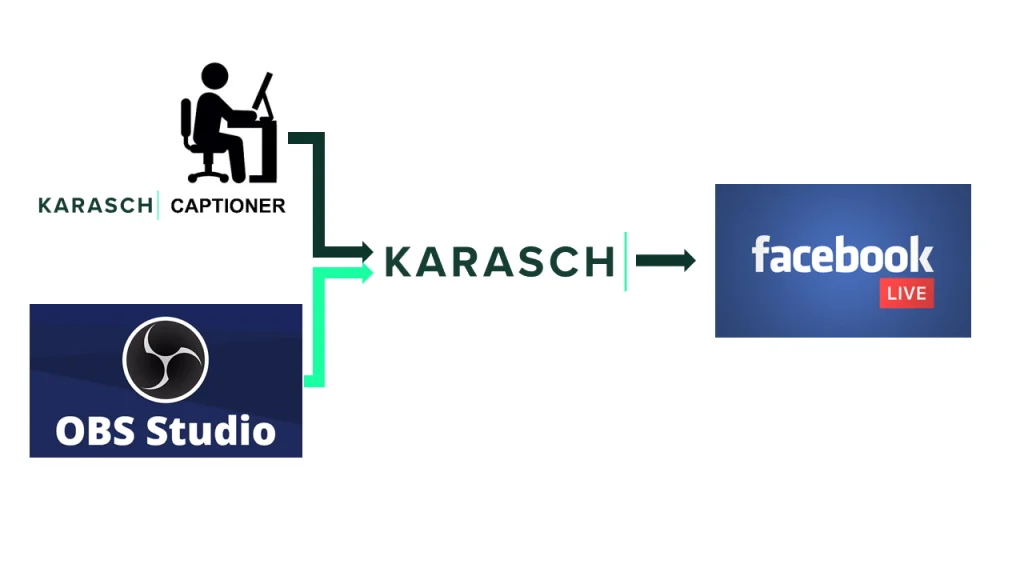How to Choose Transcription Services: The Ultimate Guide You Can't Afford to Miss!
Avoid common mistakes to get flawless transcripts every time.
Table of Contents
Learn How to Choose the Best Transcription Service Provider.

Introduction
When you are in the market for transcription, eager to learn how to choose the right transcription service provider for your needs, you may overlook some factors that can make this search more expensive than planned.
Initially, you’re drawn to a low-cost option, thinking it’s a great deal. But after one look at the delivered transcripts, you discover that they are riddled with errors.
Usually, the disappointing result is an outcome of a transcription business that leans too heavily on AI. Frustrated, you remember a colleague’s advice: always choose a transcription service with human transcribers who have experience in your industry; that can get you the level of depth and accuracy you expect.
As you explore further, you’re tempted by promises of a few-hour turnaround times. However, you remember the unspoken rule that speed often sacrifices quality.
You pause to consider whether the transcription provider in question offers the transcript format your industry requires. After all, you wouldn’t want to have to reformat transcripts at the last minute because the service simply couldn’t deliver the formats you needed.
And if you’ve worked with sensitive information before, you know that not every transcription service provider takes data protection seriously. You can overlook this important bit, only to regret it later when confidential information is mishandled.
Determined not to make the same mistakes while selecting the right transcription company, you don’t need to spend days reading the fine print, checking for hidden fees or restrictive clauses.
This expert guide to choosing the best transcription service provider for your institution contains all the key answers that will cut your search time in half.
How to Choose Transcription Services: 10 Expert Tips for Getting It Right Every Time!
Consider whether the provider you want to hire is open to covering the following aspects of quality transcription:
1. Using human transcribers over AI transcription software
Four and half decades of transcribing experience have shown us that human transcribers bring accuracy, context, expertise, and subtlety that AI simply can’t match.
The difference in transcript quality is striking when specialized jargon and advanced technical language are used, such as during university lectures.
Industry-specific terminology and stylistic guidelines that are not common to the general public can also be a problem for AI to decipher.
For example, words that are not common to the general public may not be recognized by AI.
Consider two similar words from different professional fields: “infraction” (law) and “infarction” (medicine).
AI transcription software can easily confuse one with the other. It might fail to recognize the subtle difference of a single letter. In contrast, experienced human transcribers are sensitive about avoiding such errors.
Initially, you might think it’s not a big issue since a reader from the same professional field would likely catch the mistake. However, the transcript would still need to be corrected manually before being used, which can be a significant nuisance.
2. User-friendly ordering process
Imagine working on a tight deadline and finally discovering a transcription service that looks like a perfect fit—you decide to buy, only to find out you need to go through a cumbersome purchase and file uploading process once you’ve processed the payment.
A streamlined system that lets you place an order with minimal hassle. Additionally, it notifies you the moment your transcript is ready can make all the difference.
Therefore, the best transcription service providers try to strike a balance between security and efficacy, meaning:
- Sharing and signing up with the minimum necessary contact and billing details to securely upload and retrieve your transcripts
- Clear, simple, and intuitive instructions about your next steps — no need to study complex transcription dashboards
- An affordable and accessible file-sharing system, without customizable features most businesses don’t use most of the time
Time is precious, and the last thing you need is a complicated ordering process that asks too many questions and requires too much personal information.
3. The comfort of a pay-as-you-go pricing model
Nobody likes being tied down by monthly subscriptions, prepayment requirements, or hidden fees, especially when your transcription needs fluctuate.
Cost Control
The pay-as-you-go model ensures better cost control and resource allocation. You can adjust spending based on actual needs rather than committing to a set fee, preventing overspending on unused services. If your needs change, you can easily switch to a different transcription service.
Scalability
Additionally, a pay-as-you-go service allows for scalability, making it easy to log in, upload your file, and pay for the transcription you need at that moment—whether it’s for a specific project, case, or class. This is especially useful for corporations, schools, or law firms dealing with fluctuating transcription demands, without the hassle of renegotiating contracts.
Volume Fluctuations
Depending on seasonality, the best transcription service provider for government work should be able to offer an adjustable transcription package that considers higher transcription volume during:
- Annual review meetings
- End of fiscal year
- Election cycles
- Legislative sessions
- Public consultations
- Seasonal reports
With pay-as-you-go, you can manage your budget more effectively, paying only for what you need when you need it.
And the right transcription company will meet you halfway, accommodating both urgency and volume.
Check this video to see how easy it is to get accurate, human-generated, high-integrity transcripts—no complex sign-ups required.
4. Price transparency from start to finish
Knowing exactly what you’re paying for is crucial. A reliable transcription service should offer clear pricing upfront.
To illustrate, you should expect not to experience any surprises. Clear accuracy standards, easy-to-understand terms of use, flexible delivery time options, and straightforward formatting choices ensure a seamless experience.
Educational institutions that work with a fixed budget. Therefore, they have to watch every cent they spend would benefit from such predictability.
Transparency helps them avoid any unexpected costs. Sticking to predictable budgets helps disability coordinators continue efforts to make lecture transcripts accessible to students with disabilities. Such students need additional support for exam prep and research, often completely unavailable or inaccurate without the help of human-generated transcripts.
Furthermore, working with transparent pricing can enhance the institution’s internal workflow and collaboration without incurring extra costs.

5. Beware of quick turnaround promises
It might be convenient to go for a service that promises near-instant turnaround, but that’s often a red flag.
One-hour turnaround times can mean the service relies exclusively on AI software.
AI can often complete large files within minutes to an hour. Human transcriptionists on the other hand need at least several hours for a one-hour audio file.
Add the two-step vetting process of professional agencies to that, and the minimum time to get a 99%-accurate transcript made by human transcriptionists usually comes down to at least 24 – 48 hours.
Keep in mind that you can ask for rush service or expedited delivery. However, top transcription service providers usually charge more for such service.
And the reason for that is simple: engaging more labor, time, and effort to ensure quality, consistency, and accuracy.
In a legal case or police investigation, for example, errors could have serious consequences. It’s better to wait a bit longer for a high-quality, human-verified transcript delivered by transcribers specialized in legal transcription.
6. Formatted transcripts for specialized needs
Every industry has its own standards and requirements, and transcription services should cater to them.
Adhering to Transcript Standards
Whether you need legal formatting according to NCRA standards, engineering writing standards for engineering, or specific note-taking formats for educational purposes, having customizable options is key.
For example, university-level STEM courses may require several types of transcripts:
- An easy-to-read format for lecture notes
- Publishing format standards for engineering journals
- Verbatim transcripts that capture every spoken word for students with disabilities
- Time-stamped transcripts synced with corresponding lecture videos or audio materials and / or transcripts that follow along with slides
- Transcripts with speaker Identification, clearly labeling who is speaking, for instance, a student or a professor or a third party asking questions
- Multilingual transcripts, e.g. for mixed English and Spanish-speaking communities
- Contextual notes, including descriptions of non-verbal cues, such as audience laughter, applause, or murmurs for deaf or hard-of-hearing students
- Accessible format (such as using large font sizes or high-contrast fonts) to accommodate students with visual impairments
Even the simplest transcript requirements for college lectures need to meet multiple criteria. Left or right justification, font type, line spacing, and paragraph length are just a few of the rules transcribers consider daily.
Picking a transcription service that understands and offers these options will save you time and effort in the long run.
Choosing a Family-Owned and Operated Transcription Company for Personalized Support (Case Study)
A great example is our collaboration with Salus University (now at Drexel), which has relied on transcription services for its specialized medical and audiology courses for many years. Their needs change from semester to semester, depending on the students and courses. Each time their needs change, our transcription team adjusts to meet their specific requirements, helping the university stay organized and efficient while avoiding rigid service models.
Eventually, as more schools introduce transcription, live CART Captioning and other universal design solutions this will greatly help meet the needs of the 21 percent of undergraduate and 11 percent of postgraduate students attending lectures at American universities who have reported a disability.
7. Discount opportunities
Usually, clients with high-volume needs have the most questions about how to choose transcription services. And rightfully so, because for them discounts can make a significant difference.
Experienced transcription companies offer competitive rates for in-class quality and may provide even better rates for larger projects.
By bringing extensive volumes of transcription work to one vendor you may be able to negotiate better rates, making it more cost-effective while maintaining high quality.
8. Personalized support for larger projects
When you’re handling a large project, it helps to have a dedicated team you can interact with during emergencies.
You should be able to expect timely responses, a sense of urgency, sensitivity to time zone differences, an understanding of the need for honesty and the integrity to deliver exactly as promised without overpromising.
Here is a success story from one of our clients who has experienced firsthand the benefits of our personalized transcription services. From our timely responses to urgent requests, our team consistently delivers exactly what’s promised—without overpromising — ensuring trust, reliability, and accuracy every step of the way.
Sara Shuaib, Med. MS, Student Services Manager at Paradise College Community College (Case Study)
9. Specialized expertise matters
Experience in specialized fields like legal or medical transcription is crucial to producing accurate transcripts. Companies that have been in the industry for decades bring a wealth of knowledge and expertise that newer, more generic services may lack.
For instance, when a law firm needs to transcribe an interview or testimony from a forensic or medical expert witness, they require exact verbatim transcripts, including specialized terminology and correct legal formatting.
Consequently, these critical tasks are best handled by a transcription service that employs a two-step, human review process to ensure accuracy and precision. The process should include:
- First review: After the initial transcription is completed, a professional transcriber or editor reviews the document for accuracy, linguistics, style, and overall coherence.
- Second review: A different transcriber or editor then conducts a second review. This step is vital as a fresh set of eyes may catch errors or inconsistencies missed in the first review, especially those related to the legal field.
The two-step vetting process is a sort of informal peer review process conducted by high-integrity human transcription service providers.
If you work with complex language in medicine, law, or engineering, the added step of quality control should be among your priority criteria when choosing a transcription service.
10. Look for a local transcription service - no need for a big-box corporation
Finally, most institutions needing expert, high-accuracy transcription are under tight schedules. The “biggest” name in the industry isn’t necessarily the best fit for them.
Sometimes, working with a US-based, family-owned business can offer a better experience than can be offered by the call center of a multinational corporation. A local transcription company like ours with a four-decade-long track record can often:
- Take the time to build a relationship with you
- Understand your unique needs
- Adjust services accordingly
- Be more responsive and available
- Have a better network of local transcribers with dialectical acumen
Conclusion
In conclusion, these tips should have helped you understand the importance of choosing the right transcription service provider, especially in industries where trust and reliability are critical.
Opt for human transcribers to ensure accuracy, a user-friendly ordering process, and a pay-as-you-go model with transparent pricing. Be cautious of quick turnarounds, and ensure specialized formatting and expertise are offered by the vendor you chose.
Personalized support and local US-based service can also provide added benefits, making your choice more effective and efficient.
Additionally, pay attention to timely responses and a team that adapts to urgency, seasonality, unique industry needs and time zone differences.
Choosing a transcription provider that aligns with these principles not only enhances your operational efficiency but also ensures that your transcription needs are met with the utmost precision and professionalism.
Make informed choices to secure the best results for your business or institution.
Our Latest Resources
Request A
Call Back
Request A Call Back
Do you have additional questions?
Click here to meet your dedicated Client Relationship Manager.



